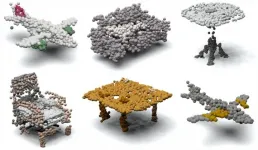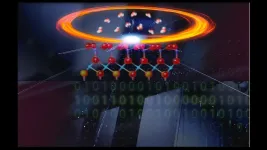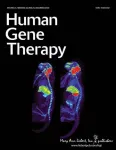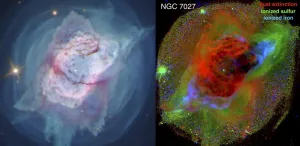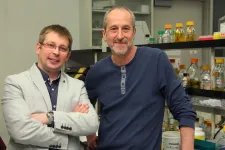Exploration of toxic Tiger Rattlesnake venom advances use of genetic science techniques
In deciphering a simple, but particularly deadly venom, the research opens avenues for exploration of how genes produce traits
2021-01-20
(Press-News.org) The Tiger Rattlesnake possesses the simplest, yet most toxic venom of any rattlesnake species, and now new research from a team lead by a University of South Florida biologist can explain the genetics behind the predator's fearsome bite.
Published in the new edition of "Proceedings of the National Academy of Sciences," USF Department of Integrative Biology Assistant Professor Mark Margres and colleagues across the southeastern United States have sequenced the genome of the Tiger Rattlesnake to understand the genotype of the venom trait. Despite the simplicity of the Tiger Rattlesnake's venom, Margres says it is roughly 40 times more toxic than the venom of the Eastern Diamondback Rattlesnakes here in Florida.
Their work is the most complete characterization of the venom gene-regulatory network to date and its identification of key mechanisms in producing the particularly toxic venom will help scientists explain a wide array of genetic questions.
"Simple genotypes can produce complex traits," Margres said. "Here, we have shown the opposite is also true - a complex genotype can produce simple traits."
Margres collaborated with colleagues at Clemson University, Florida State University and the University of South Alabama, in the project, which sought to explain whether trait differences are derived from differences in the number of genes, their sequence or how they are regulated. Their work is only the second time a rattlesnake genome has been decoded.
An organism's genotype is the set of genes it carries, and its phenotype is all of its observable characteristics, which can be influenced by its genes, the environment in which it lives, and other factors. Evolutionary biologists work to understand how genes influence the variation in phenotype among otherwise similar organisms. In this case, they looked at why different species of rattlesnakes differ in venom composition and toxicity.
Tiger Rattlesnakes are native to the Sonoran Desert of southern Arizona and northern Mexico where the relatively small pit viper preys on lizards and rodents. While some species of rattlesnakes have complex venoms that are the result of scores of genes, Margres said the Tiger Rattlesnake's venom is quite simple - as few as 15 of its 51 toxic-producing genes actively drive the production of proteins and peptides that attacks its prey's nervous system, forces blood pressure to drop and causes blood clotting to cease.
The team found that the number of venom genes greatly exceeds the number of proteins produced in the simple phenotype, indicating a complex process was at the heart of the toxic venom and the Tiger Rattlesnakes even has toxic genes to spare.
"Only about half of the venom genes in the genotype were expressed," Margres said. "To me, the interesting part is why are the non-expressed genes still present? These genes can make functional toxins, they just don't. That needs to be explored further."
Beyond understanding this one species of venomous snake, Margres said the research will help advance genetic science by showing the techniques more commonly used on genetic research on mice and fruit flies, organisms that are often used in genetic studies, can also work when applied to less-studied organisms like snakes. The team used genetic sequencing techniques that are common in human genetics research and in doing so, opened the door for scientists to understand the genotype-phenotype relationship in many other organisms.
Another potential side benefit of the research, Margres said, is that snake venom is used in medicine for humans to combat stroke and high blood pressure. The more scientists understand about venom, the better medical engineering can apply that knowledge in drug discovery and development.
INFORMATION:
The research was funded by the National Science Foundation and Clemson University.
ELSE PRESS RELEASES FROM THIS DATE:
2021-01-20
A new therapy developed by researchers at Rush University Medical Center is showing success as a way to prevent COVID-19 symptoms in mice.
In a study published in the Journal of Neuroimmune Pharmacology, mouse models with COVID-19 showed positive results when a small peptide was introduced nasally. The peptide proved effective in reducing fever, protecting the lungs, improving heart function and reversing cytokine storm -- a condition in which an infection triggers the immune system to flood the bloodstream with inflammatory proteins. The researchers also report success in preventing the disease from progression.
"This ...
2021-01-19
Disasters in high-risk industries can have catastrophic environmental, financial and human safety consequences. One way these industries help prevent and mitigate disasters is formal procedures designed to standardize how work is done. These procedures typically come in the form of a written document workers use while performing a task.
Camille Peres, associate professor at the Texas A&M University School of Public Health, said that there are two models of safety companies usually follow to varying degrees, whether they realize it or not. Safety model one "is very much a control paradigm," Peres said. "The idea the company has is that if they control absolutely everything that's going on, then they will be safe." This ...
2021-01-19
Before he joined the University of Texas at Arlington as an Assistant Professor in the Department of Computer Science and Engineering and founded the Robotic Vision Laboratory there, William Beksi interned at iRobot, the world's largest producer of consumer robots (mainly through its Roomba robotic vacuum).
To navigate built environments, robots must be able to sense and make decisions about how to interact with their locale. Researchers at the company were interested in using machine and deep learning to train their robots to learn about objects, but doing so requires a large dataset of images. While there are millions of photos and videos of rooms, none were shot from the vantage point of a robotic vacuum. Efforts to train using images with human-centric perspectives failed.
Beksi's ...
2021-01-19
Following a series of studies on termite mound physiology and morphogenesis over the past decade, researchers at the Harvard John A. Paulson School of Engineering and Applied Sciences have now developed a mathematical model to help explain how termites construct their intricate mounds.
The research is published in the Proceedings of the National Academy of Sciences.
"Termite mounds are amongst the greatest examples of animal architecture on our planet," said L. Mahadevan, the Lola England de Valpine Professor of Applied Mathematics, of Organismic and Evolutionary Biology, and ...
2021-01-19
Computer simulations hold tremendous promise to accelerate the molecular engineering of green energy technologies, such as new systems for electrical energy storage and solar energy usage, as well as carbon dioxide capture from the environment. However, the predictive power of these simulations depends on having a means to confirm that they do indeed describe the real world.
Such confirmation is no simple task. Many assumptions enter the setup of these simulations. As a result, the simulations must be carefully checked by using an appropriate "validation protocol" involving experimental measurements.
"We focused on a solid/liquid interface because interfaces are ubiquitous in materials, and those between oxides and water are key in many energy applications." -- Giulia Galli, theorist ...
2021-01-19
New Rochelle, NY, January 19, 2021--Gene editing therapies, including CRISPR-Cas systems, offer the potential to correct mutations causing inherited retinal degenerations, a leading cause of blindness. Technological advances in gene editing, continuing safety concerns, and strategies to overcome these challenges are highlighted in the peer-reviewed journal Human Gene Therapy. Click here to read the full-text article free on the Human Gene Therapy website.
"Currently, the field is undergoing rapid development with a number of competing gene editing strategies, including allele-specific knock-down, base editing, prime editing, and RNA editing, are under investigation. Each offers a ...
2021-01-19
ITHACA, N.Y. - When the semester shifted online amid the COVID-19 pandemic last spring, Cornell University instructor Mark Sarvary, and his teaching staff decided to encourage - but not require - students to switch on their cameras.
It didn't turn out as they'd hoped.
"Most of our students had their cameras off," said Sarvary, director of the Investigative Biology Teaching Laboratories in the College of Agriculture and Life Sciences (CALS).
"Students enjoy seeing each other when they work in groups. And instructors like seeing students, because it's a way to assess whether or not they understand the material," Sarvary said. "When we switched to online learning, that component got lost. We wanted to investigate the reasons ...
2021-01-19
Scientists have combined NASA data and cutting-edge image processing to gain new insight into the solar structures that create the Sun's flow of high-speed solar wind, detailed in new research published today in The Astrophysical Journal. This first look at relatively small features, dubbed "plumelets," could help scientists understand how and why disturbances form in the solar wind.
The Sun's magnetic influence stretches billions of miles, far past the orbit of Pluto and the planets, defined by a driving force: the solar wind. This constant outflow of solar material carries the Sun's magnetic field out into space, where it shapes the environments around Earth, other worlds, and in the reaches of deep space. Changes in the solar wind ...
2021-01-19
Images of two iconic planetary nebulae taken by the Hubble Space Telescope are revealing new information about how they develop their dramatic features. Researchers from Rochester Institute of Technology and Green Bank Observatory presented new findings about the Butterfly Nebula (NGC 6302) and the Jewel Bug Nebula (NGC 7027) at the 237th meeting of the American Astronomical Society on Friday, Jan. 15.
Hubble's Wide Field Camera 3 observed the nebulae in 2019 and early 2020 using its full, panchromatic capabilities, and the astronomers involved in the project ...
2021-01-19
New high-resolution structures of the bacterial ribosome determined by researchers at the University of Illinois Chicago show that a single water molecule may be the cause -- and possible solution -- of antibiotic resistance.
The findings of the new UIC study are published in the journal Nature Chemical Biology.
Pathogenic germs become resistant to antibiotics when they develop the ability to defeat the drugs designed to kill them. Each year in the U.S., millions of people suffer from antibiotic-resistant infections, and thousands of people die as a result.
Developing new drugs is a key way the scientific community is trying to reduce the impact of antibiotic resistance.
"The first thing we need to do to make improved drugs is to better understand how antibiotics work and how 'bad ...
LAST 30 PRESS RELEASES:
[Press-News.org] Exploration of toxic Tiger Rattlesnake venom advances use of genetic science techniques
In deciphering a simple, but particularly deadly venom, the research opens avenues for exploration of how genes produce traits
